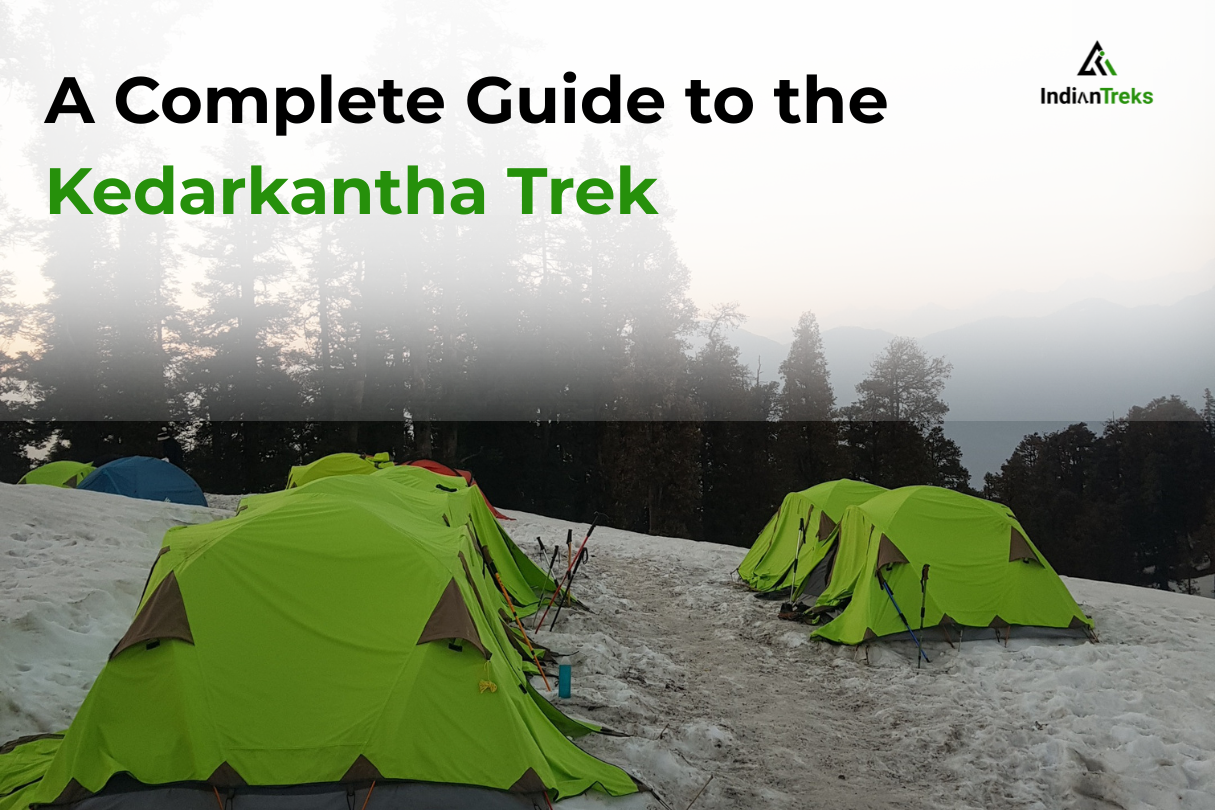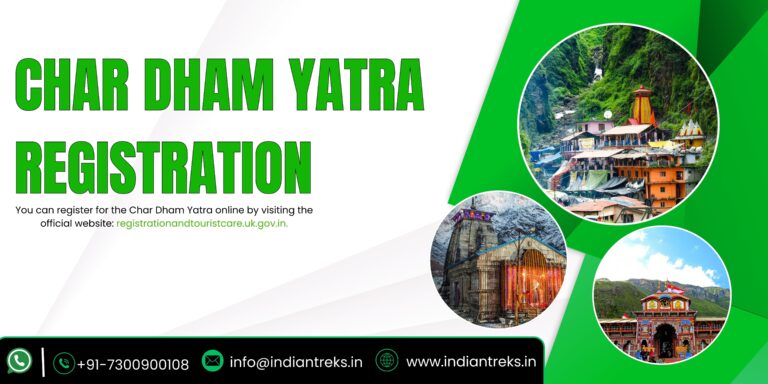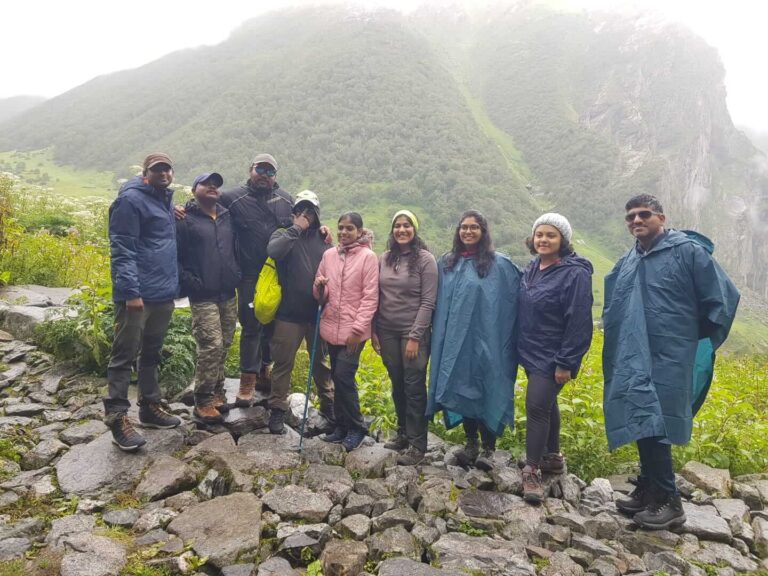A Complete Guide to the Kedarkantha Trek
If you’re curious about North India’s most popular winter trekking destination, you’ve landed at the right place. This comprehensive Kedarkantha Trek guide will walk you through everything you need to know — from the highlights that make Kedarkantha a must-do trek to all the essential details for planning your journey. Whether you’re a first-time trekker or an experienced adventurer, this guide will help you prepare for an unforgettable Kedarkantha experience.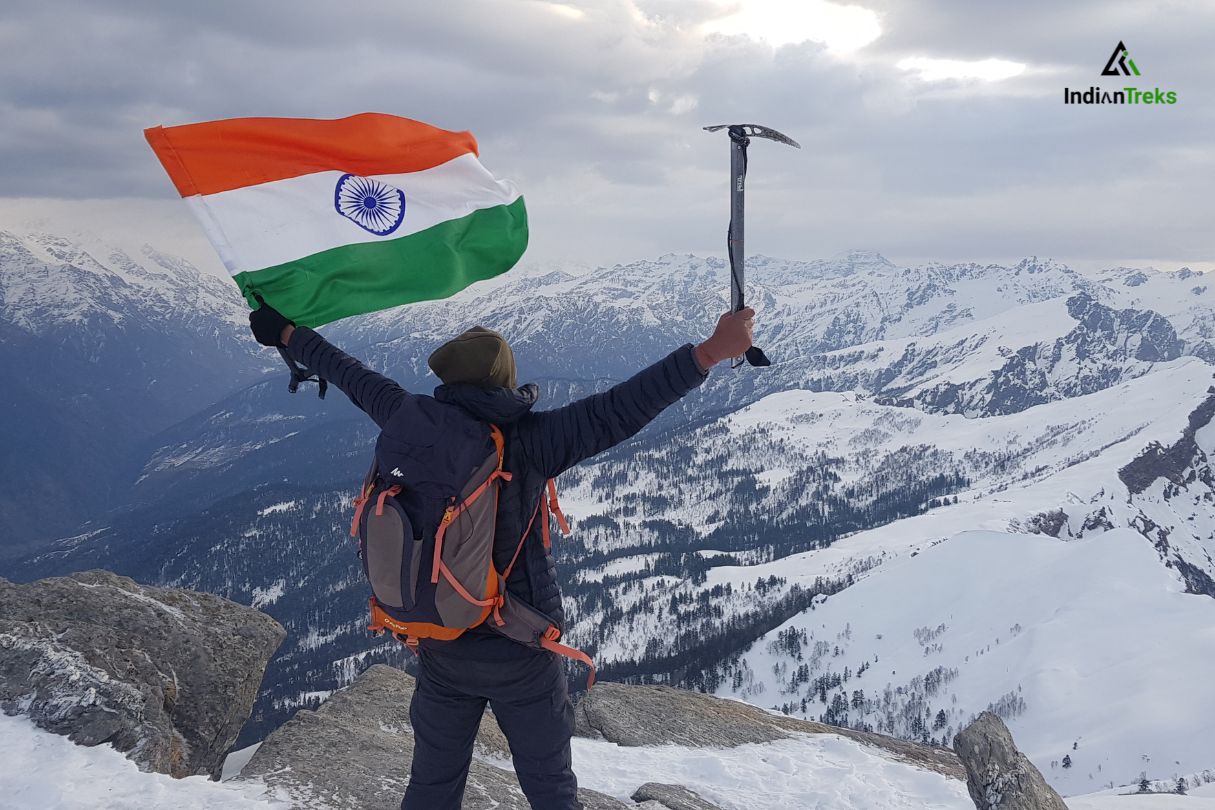
Kedarkantha, standing tall at 12,500 ft, is one of North India’s most popular trekking destinations. This trek is accessible throughout the year, giving adventurers the chance to experience its beauty in every season. It’s an ideal trek for beginners and first-time trekkers, and anyone between the ages of 5 and 65 can comfortably take part. If you’re eager to learn more about Kedarkantha and plan your trek, keep reading!
Kedarkantha Trek Guide
Kedarkantha is a stunning peak located in the Uttarkashi district of Uttarakhand, part of the Garhwal Himalayas and situated within the Govind Wildlife Sanctuary. Trekkers from across the globe are drawn to this breathtaking destination, largely due to its easy-to-moderate difficulty level, making it accessible to anyone eager to scale its heights. It is widely regarded as one of the best trekking destinations in North India.
The trekking experience varies with the season. In winter, the trail is covered in snow, offering a magical snowy landscape, while in summer, trekkers are treated to lush greenery and vibrant flora and fauna. This seasonal diversity is why many adventurers return to Kedarkantha multiple times. Being open all year round, it remains a favorite among trekking enthusiasts. This Kedarkantha trek guide aims to provide all the essential details to help you plan your trek with ease and confidence.
The World of Kedarkantha
Legend has it that Lord Shiva once meditated on the peak of Kedarkantha. However, disturbed by the noise from the surrounding areas, he moved on to Kedarnath. Today, a small temple at the summit is dedicated to Lord Shiva, marking the spot where, according to local lore, he once sat in meditation.
Whether or not you believe the legend, reaching the summit is a truly enchanting experience. The trek itself is peaceful, offering serene landscapes and a chance to connect with nature. Many trekkers prefer to experience it solo, but beginners are advised to trek with an experienced guide. This trek is suitable for anyone in good health, thanks to its easy-to-moderate difficulty level, making Kedarkantha one of the most sought-after trekking destinations in North India.
Scenic Views from the Summit
Kedarkantha is a part of the Garhwal Himalayas and is surrounded by numerous majestic peaks. From the summit, you can enjoy 360-degree panoramic views of over 12 peaks. On a clear day, your Kedarkantha trek guide can point out all the surrounding peaks, including the Swargarohini Peaks, often referred to as the crown of the Garhwal Himalayas.
The peak lies within the Govind Wildlife Sanctuary, so trekkers may encounter exotic plants, birds, and wildlife along the trail. As you move through the dense alpine forests, you’ll be treated to the serene sounds of nature. Open meadows along the route offer breathtaking views and a chance to experience the powerful Himalayan winds.
The landscape changes dramatically with the seasons. In winter, the region is blanketed in thick snow, creating a pristine white wonderland. In summer, lush greenery and vibrant flora dominate the scenery. Throughout the trek, you’ll witness the abundance of flora and fauna, making Kedarkantha an unforgettable visual and sensory experience.
Where Does the Trek Actually Start?
The Kedarkantha trek begins from the quaint village of Sankri, situated at an altitude of 6,500 ft. From here, the summit is approximately 10 km away, making the total trek around 20 km from start to finish. As you arrive in Sankri, you’ll be greeted by breathtaking views of the snow-capped Garhwal Himalayas, setting the perfect tone for your adventure.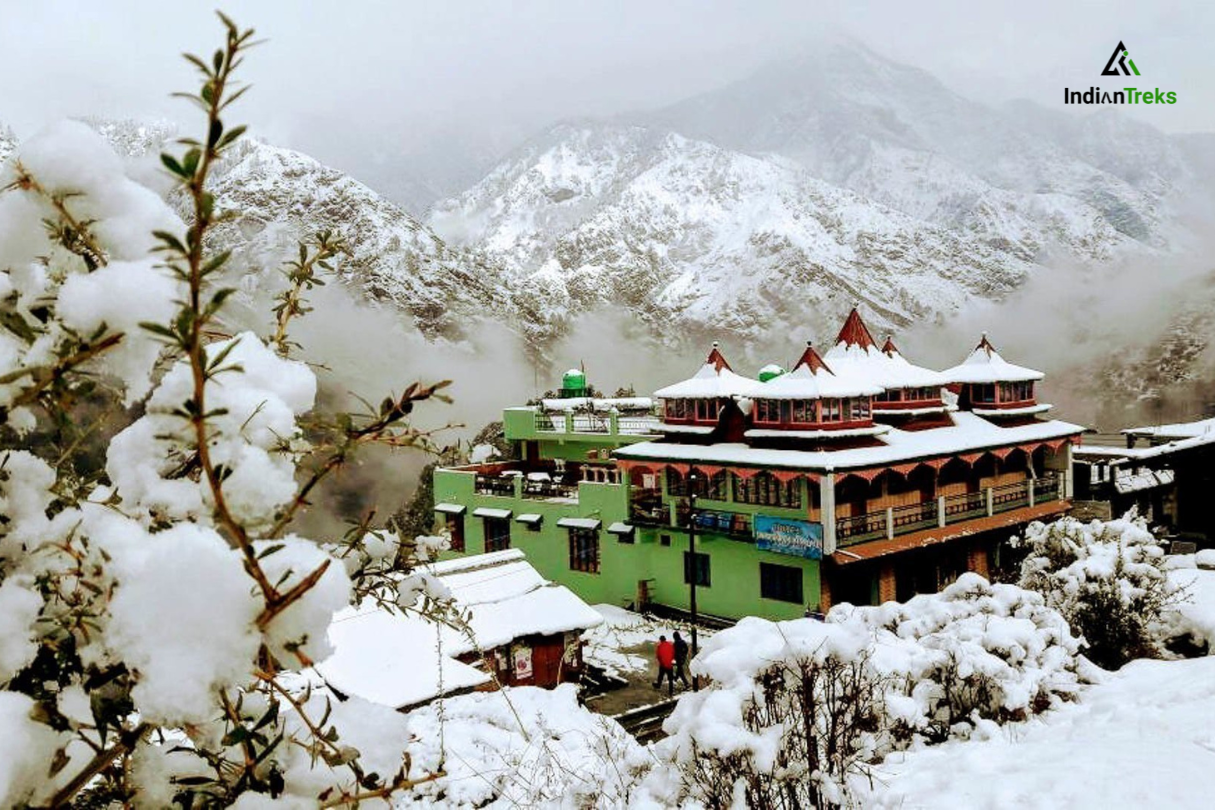
While there aren’t many activities in Sankri, the locals are incredibly warm and welcoming to trekkers. Spending some time with them can be a unique cultural experience, giving you insight into the traditions and lifestyle of the region. Including this small interaction in your trek adds an authentic touch to your Kedarkantha adventure.
How to Reach Sankri?
Since the Kedarkantha trek starts from Sankri, it’s important to know how to get there. Sankri is located about 200 km from Dehradun, the capital of Uttarakhand. Reaching Dehradun is quite convenient, as the city is well-connected to major Indian cities by air, train, and road. From Delhi, you can reach Dehradun in just over an hour by flight. Alternatively, you can drive to Dehradun and explore the town before starting your trek.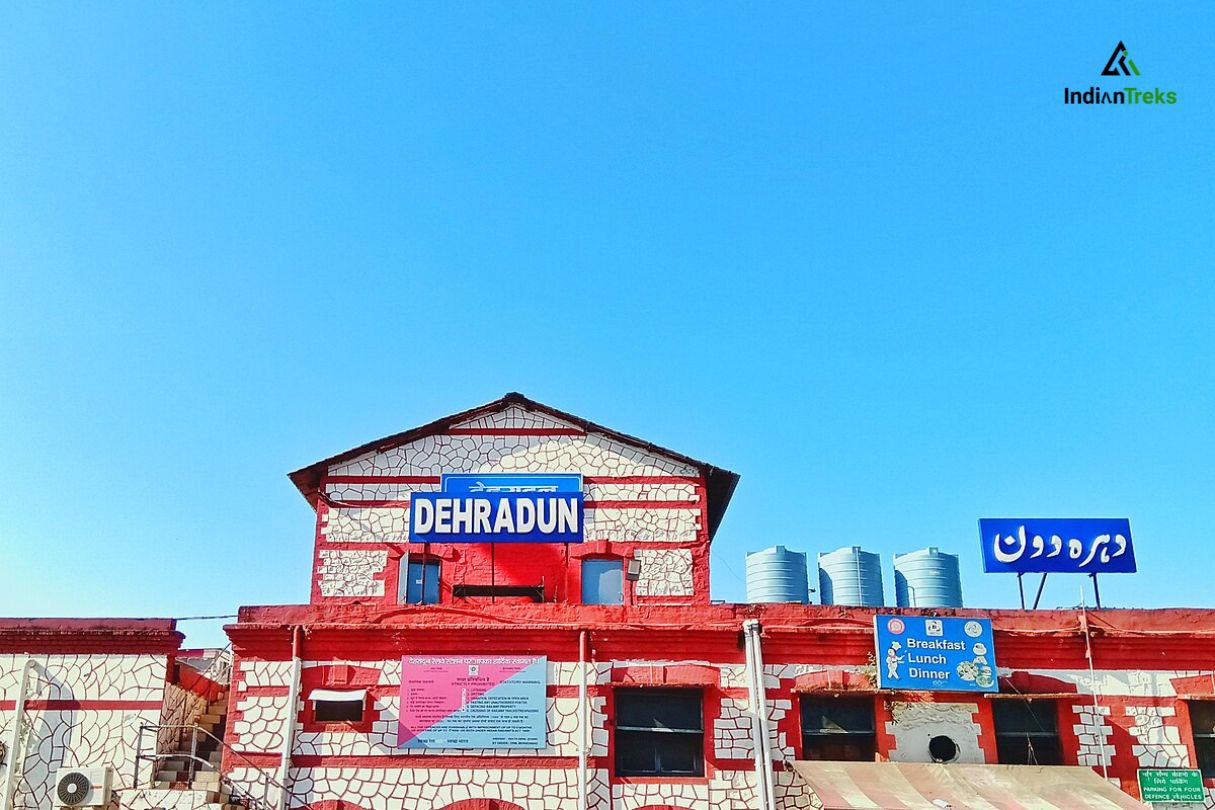
From Dehradun, it takes around 7 hours to reach Sankri. You can hire a cab or take a local bus. Private transfers are faster, while public buses may take 8 to 10 hours, but are more economical. If you book a Kedarkantha trek package, the cost is usually calculated from Dehradun onwards, so you may need to account for travel expenses to Dehradun separately.
Trekking from Sankri to the Peak
In this Kedarkantha trek guide, we’ll walk you through the entire trek route and highlight key details to help you prepare. As mentioned earlier, the trek begins from Sankri, following a well-marked trail with gradual ascents and descents. Along the way, you’ll encounter wide-open meadows, where the powerful Himalayan winds and breathtaking scenery make for an unforgettable experience. The trail also features a few thrilling ridges, though there are no extreme steep climbs, except for the final 100 ft to the summit, which can be slightly challenging.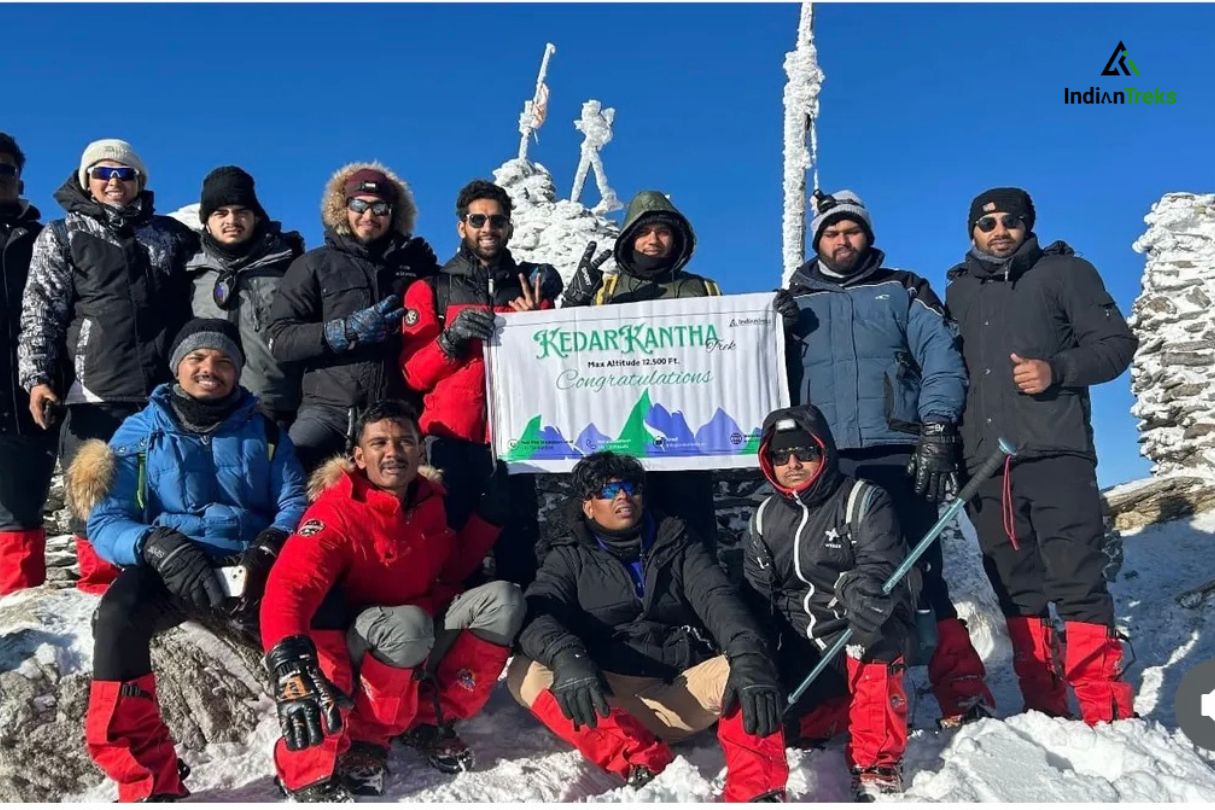
The route from Sankri to Kedarkantha peak is serene and scenic, especially in the summer months, when the trail is alive with vibrant flora and fauna. As you progress, you’ll pass through two beautiful campsites: Juda Ka Talab and Kedarkantha Base Camp, each offering a unique experience and perfect spots to rest and take in the surroundings. Continue reading this Kedarkantha trek guide to discover more about these campsites and plan your trek effectively.
The Journey from Juda Ka Talab to Kedarkantha Base
Once you begin your trek, a great place to pause is Juda Ka Talab, a serene lake located about 4 km from Sankri at an altitude of 9,000 ft. Known as one of the most beautiful campsites in the Himalayas, it is surrounded by dense alpine forests so thick that sunlight barely filters through, creating a scene straight out of a fairy tale. During winter months starting December, the lake freezes over, allowing trekkers to walk on its icy surface, making it a truly unique experience for winter adventurers.
From Juda Ka Talab, the trek continues 4 km to Kedarkantha Base Camp. This camp is famous for its proximity to the peak. From here, reaching the summit takes just a few hours. The climb from the base camp involves some steep sections, but even beginners can manage it with guidance from an experienced trekker. One of the highlights of this campsite is the breathtaking sunrise over the surrounding Garhwal Himalayas. Waking up early to witness the sun casting golden hues across the hills is an experience you shouldn’t miss on your Kedarkantha trek
What’s the Best Time to Travel?
Kedarkantha is open year-round, so the best time to visit depends on your preferences.
If you love snowy landscapes, winter is the perfect season. From December to April, the entire trekking trail is blanketed in snow, making Kedarkantha one of the most popular winter treks in the Himalayas. Snow lovers and adventure seekers will find this time ideal for an unforgettable trekking experience.
For nature enthusiasts, the summer months (May to June) provide a pleasant trekking experience, with temperatures ranging from 5°C to 15°C. Trekking in September, October, and November is equally rewarding, as the trail is adorned with a variety of Himalayan wildflowers, and the surrounding flora and fauna within the Govind Wildlife Sanctuary are at their most vibrant.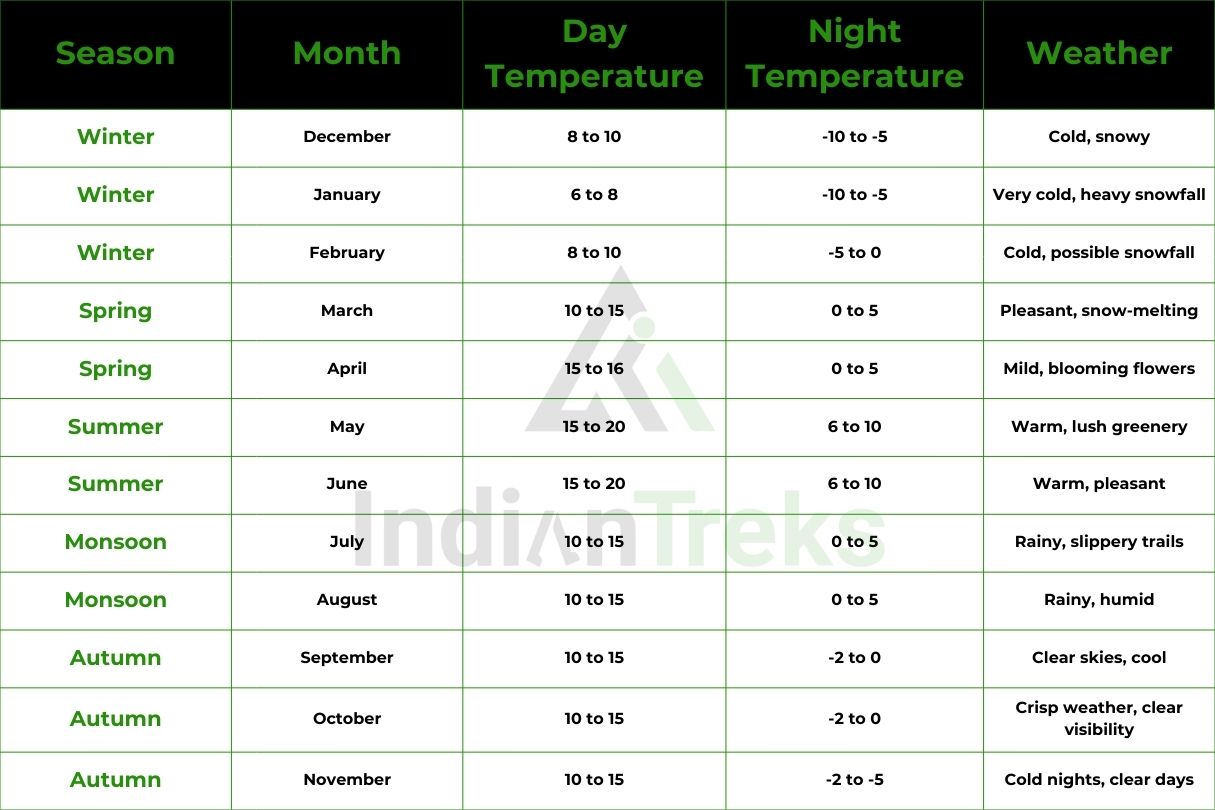
However, monsoon season (July and August) is not ideal for beginners. Heavy rainfall can make the trail slippery and challenging, while landslides and difficulty finding shelter pose additional risks. During winter and monsoon months, it’s strongly recommended to trek under the guidance of an experienced Kedarkantha trek guide or tour operator to ensure safety and a smooth journey.
Overall Cost of the Trip
The cost of a Kedarkantha trek varies depending on the level of comfort and services you choose. On average, a trek from Dehradun ranges between INR 5,500 to INR 10,000 per person. Keep in mind that this price usually starts from Dehradun, so you may need to add your airfare or train fare to reach the city.
The final package cost offered by any tour operator depends on factors such as type of accommodation, inclusions, and transfers. Choosing the right package ensures you get a comfortable and hassle-free trekking experience, tailored to your preferences and budget.
How to Cut Down Cost?
This Kedarkantha trek guide also highlights ways to reduce your overall trek expenses without compromising comfort and safety.
Transportation: You can save on travel from your starting point to Dehradun by booking flights, trains, or Volvo buses well in advance. Once in Dehradun, you can choose a trek package from Dehradun or from Sankri. If you are a beginner, it’s safer to opt for a package starting from Dehradun.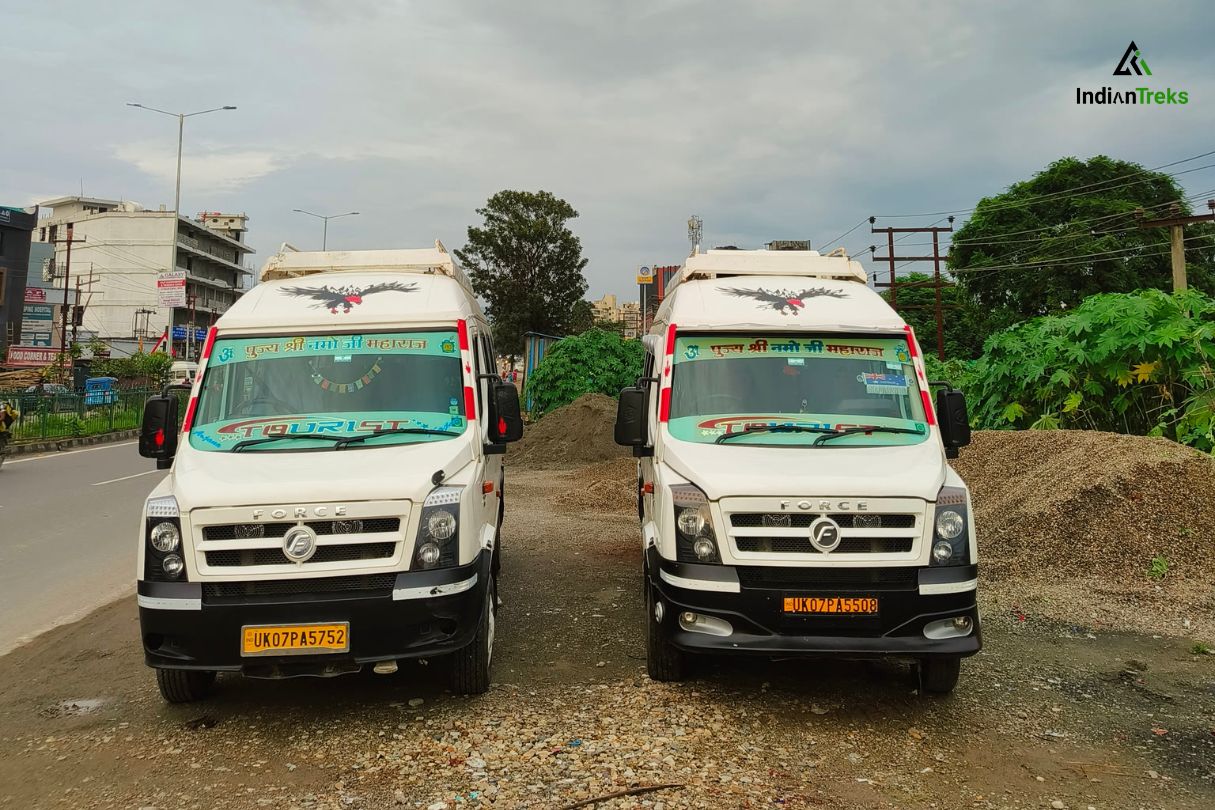
Local Transport: To reach Sankri from Dehradun, consider public transport instead of private cabs. Buses are available for as low as INR 700 per person.
Accommodation & Trek Costs: In Sankri, budget hotels are a cost-effective option. On the trek, shared accommodations at campsites or base camps can further reduce expenses. However, it’s important not to compromise on essential gear—invest in good-quality trekking shoes, thermals, and clothing to ensure a safe and enjoyable experience.
Group Bookings: Joining a pre-arranged group tour can save money, as costs are shared among trekkers. Most tour operators organize group treks led by experienced guides, ensuring all aspects of the trek are well-managed so you can focus on enjoying the journey.
Perfect Opportunity to Trek Solo
If you are fit and experienced, trekking solo to Kedarkantha can be an exciting and rewarding adventure. However, beginners or first-time visitors should always consider hiring an experienced Kedarkantha trek guide from IndianTreks. A guide ensures your safety throughout the journey and provides valuable insights into the local culture and traditions of the region.
Since the Kedarkantha trek is open year-round, you have plenty of opportunities to plan a solo trek. Whether you go alone or with a guide from IndianTreks, the majestic landscapes and serene Himalayan environment make it a memorable experience.
Things You Must Carry
If you’re trekking to Kedarkantha during the winter season, it’s crucial to be well-clothed and protected against the cold. Temperatures can drop sharply at night, while daytime weather remains chilly, and nights may even fall below freezing.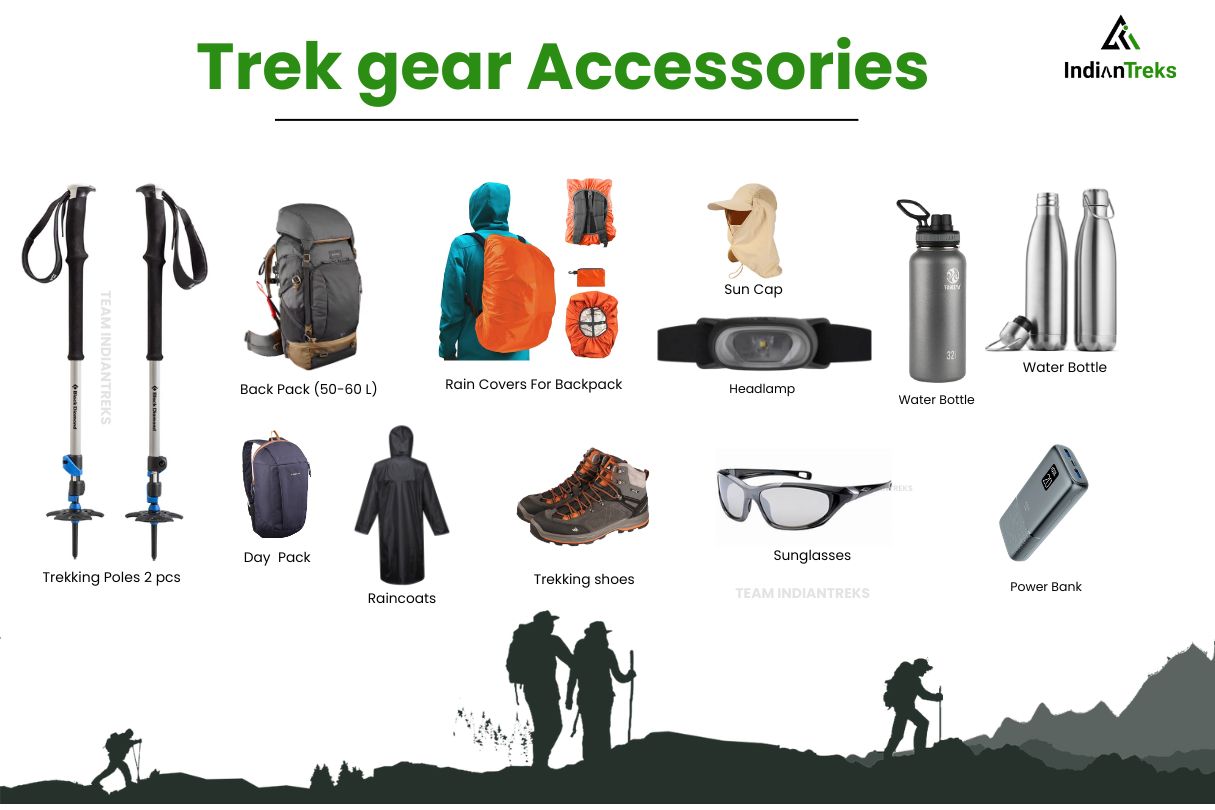
For a comfortable and safe trekking experience with IndianTreks, make sure to carry:
Thermal innerwear
Snow boots and insulated jackets
Fleece layers, raincoat, and windcheater
Gloves, caps, and warm socks
Trekking stick, first-aid kit, torch, and sunglasses
Other essential accessories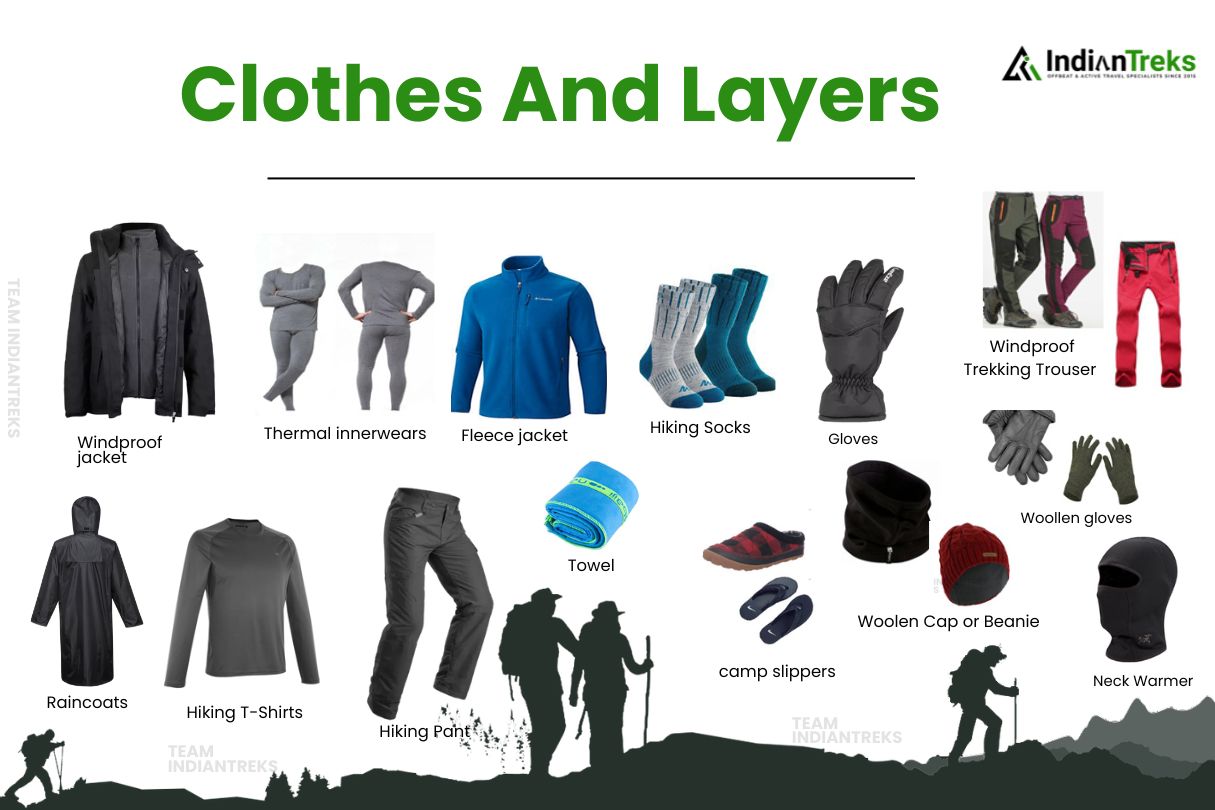
Keep in mind that mobile network coverage is unreliable at higher altitudes, so plan accordingly. Being prepared ensures a safe, enjoyable, and hassle-free trek with IndianTreks.
Kedarkantha Trek Guide – Some Fascinating Takeaways
The Kedarkantha trek is special in many ways. Whether in winter or summer, the landscape looks straight out of a travel postcard. It is a paradise for experienced trekkers and an ideal starting point for beginners, offering a perfect opportunity to learn the ropes of trekking. The seasonal variations also make the same route different in difficulty, allowing trekkers to explore it multiple times with a fresh experience each time.
If you’re a nature lover, whether it’s lush greenery in summer or pristine snow in winter, Kedarkantha is a must-visit. Numerous tour operators, including IndianTreks, organize this trek throughout the year, giving you plenty of options to plan your journey. Use this Kedarkantha trek guide while planning your trek; it provides all the essential details to ensure a safe, enjoyable, and unforgettable experience.
For more information about Kedarkantha or to discuss your trekking requirements, you can connect with IndianTreks here.
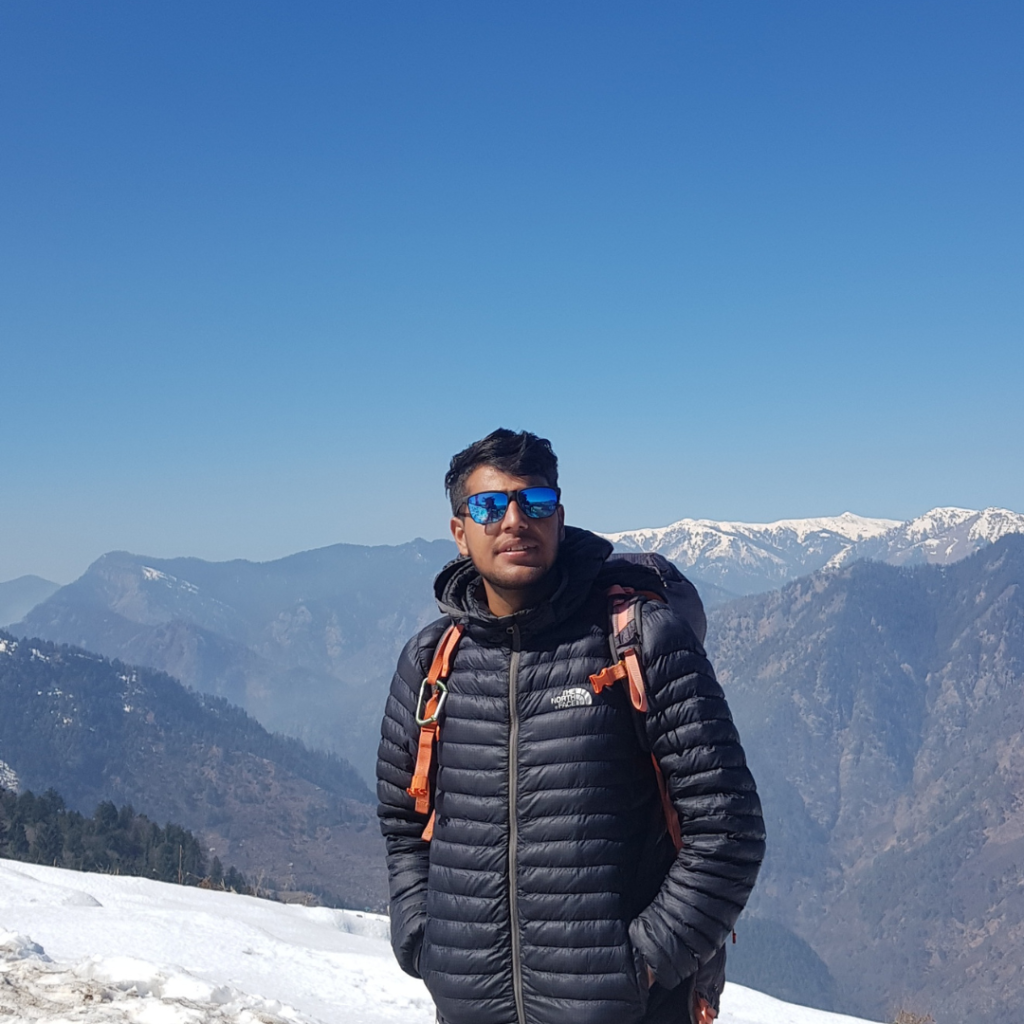
About Author – Vivek Rana
With nearly 10 years of experience in high-altitude guiding, the founder of this trekking organization is more than just a trek leader—they are a pioneer of adventure in the Himalayas. Having conquered multiple 6000-7000 meter peaks, they have led over 150 treks across the most breathtaking and challenging terrains, including Har Ki Dun, Kedarkantha, Borasu Pass, Bali Pass, Buran Ghati, Rupin Pass, Pin Bhabha, and the mighty Black Peak.
Their deep-rooted connection with the mountains isn’t just about reaching summits—it’s about creating life-changing experiences for those who dare to explore. Every expedition they lead is an invitation to step beyond limits, embrace the wilderness, and feel the raw power of the Himalayas like never before.
This is not just trekking; this is a journey into the heart of the mountains—with a guide who knows them like a lifelong friend.

